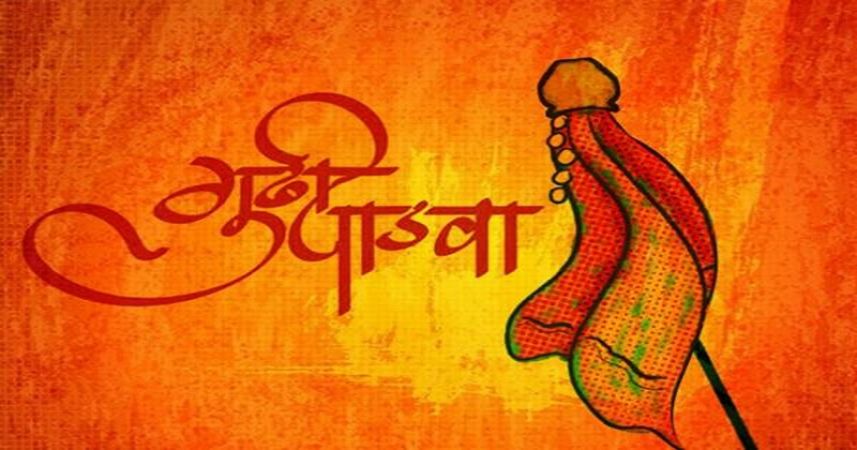
A springtime festival of Marathi Hindus, Gudi Padwa, marks the first day of Chaitra month as the beginning of new year. Generally, we celebrate the new year on 1st of January, according to our English calendar but in Hindu religion, every cast has its own days of celebrating new year just like Marathi's. It is celebrated all around Maharashtra and in other states also where Maharashtrians resides. The word पाडवा means प्रतिपद or प्रतिपदा in Sanskrit, which refers to the first day of a lunar fortnight.
History
According to Hindu mythology, on the day of Gudi Padwa, Brahma created the universe. It is also believed that it was on this day that Lord Rama killed Bali. It is one of the three and a half days in the Hindu calendar when each and every moment of the day is auspicious.
The Gudi
On this day you can notice a Gudi tied up in the households. It is a bright coloured silk saree tied on a long bamboo. On top of it, one or more boughs of neem leaves and mango leaves are attached along with a garland of flowers. This arrangement is capped with a silver, bronze or copper pot (Handi or Kalash) signifying victory or achievement.
Some of the significances attributed to raising a Gudhi are as follows:
1) It symbolizes the victory of King Shalivahana over Sakas and was hoisted by his people when he returned to Paithan.
2) Gudhi symbolizes the Brahma-dhvaj mentioned in the Brahma Purana because Lord Brahma created the universe on this day. It may also represent Indra-dhvaj.
3) Historically, the Gudhi symbolizes Lord Rama’s victory and happiness on returning to Ayodhya after slaying Ravana. Since a symbol of victory is always held high, so is the gudi.